SLUSFL6A June 2024 – November 2024 TPSM82866C
PRODMIX
- 1
- 1 Features
- 2 Applications
- 3 Description
- 4 Device Options
- 5 Pin Configuration and Functions
- 6 Specifications
-
7 Detailed Description
- 7.1 Overview
- 7.2 Functional Block Diagram
- 7.3
Feature Description
- 7.3.1 Power Save Mode
- 7.3.2 Forced PWM Mode
- 7.3.3 Optimized Transient Performance from PWM to PSM Operation
- 7.3.4 Low Dropout Operation (100% Duty Cycle)
- 7.3.5 Enable and Soft-Start Ramp
- 7.3.6 Switch Current Limit and HICCUP Short-Circuit Protection
- 7.3.7 Undervoltage Lockout
- 7.3.8 Thermal Warning and Shutdown
- 7.4 Device Functional Modes
- 7.5 Programming
- 8 Register Map
- 9 Application and Implementation
- 10Device and Documentation Support
- 11Revision History
- 12Mechanical, Packaging, and Orderable Information
9.2.3 Application Curves
VIN = 5.0V, VOUT = 1.2V, TA = 25°C, BOM = Table 9-2, unless otherwise noted. Solid lines show the FPWM mode and dashed lines show PSM.

| TPSM82866CAx | PSM and FPWM |

| TPSM82866CAx | PSM and FPWM |

| TPSM82866CAx | PSM and FPWM |

| TA = 25°C |

| TA = 25°C |

| TA = 25°C |

| FPWM | TA = 25°C |
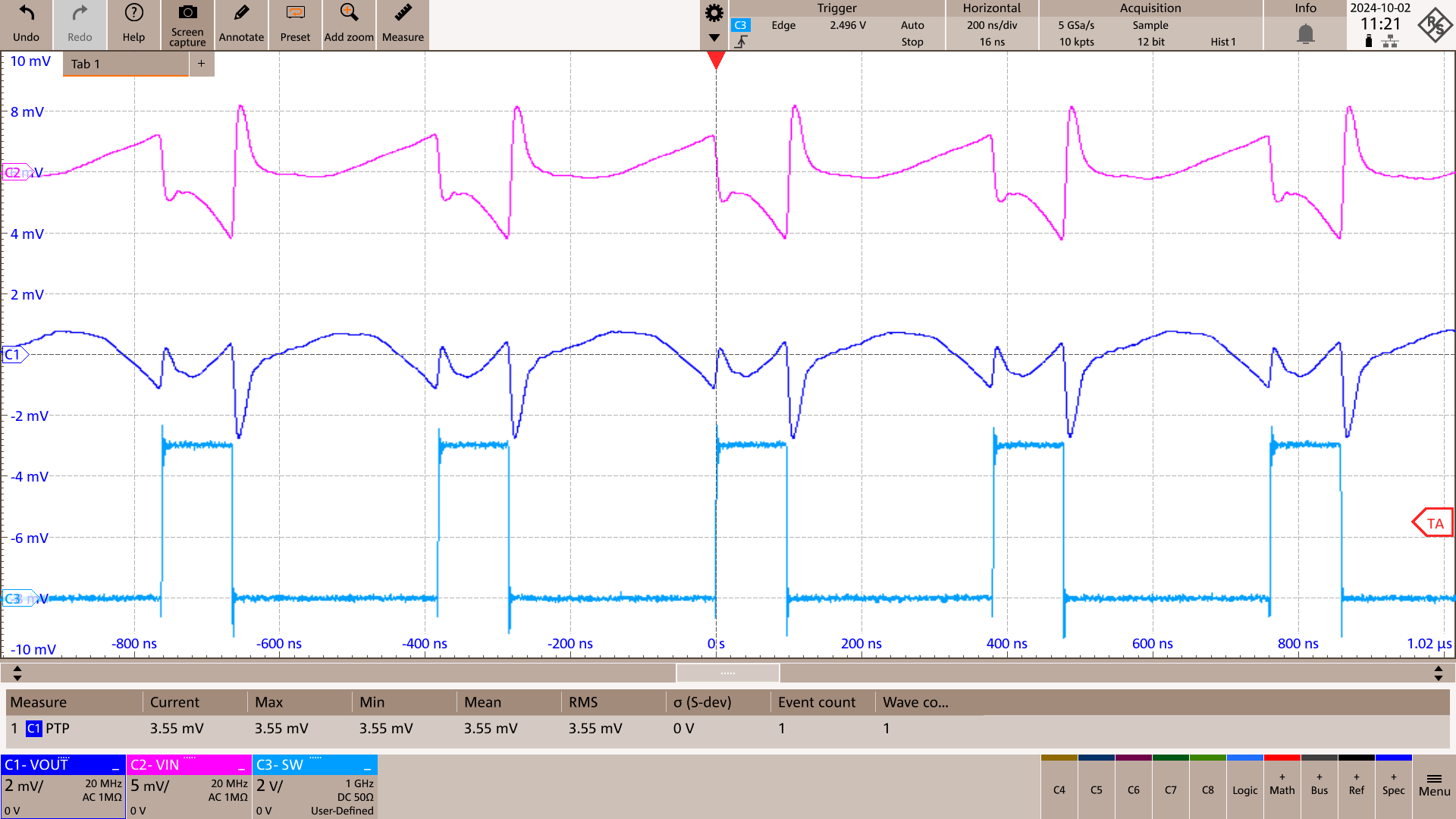
| VIN = 5.0V | VOUT = 1.2V | COUT = 3 × 22uF |
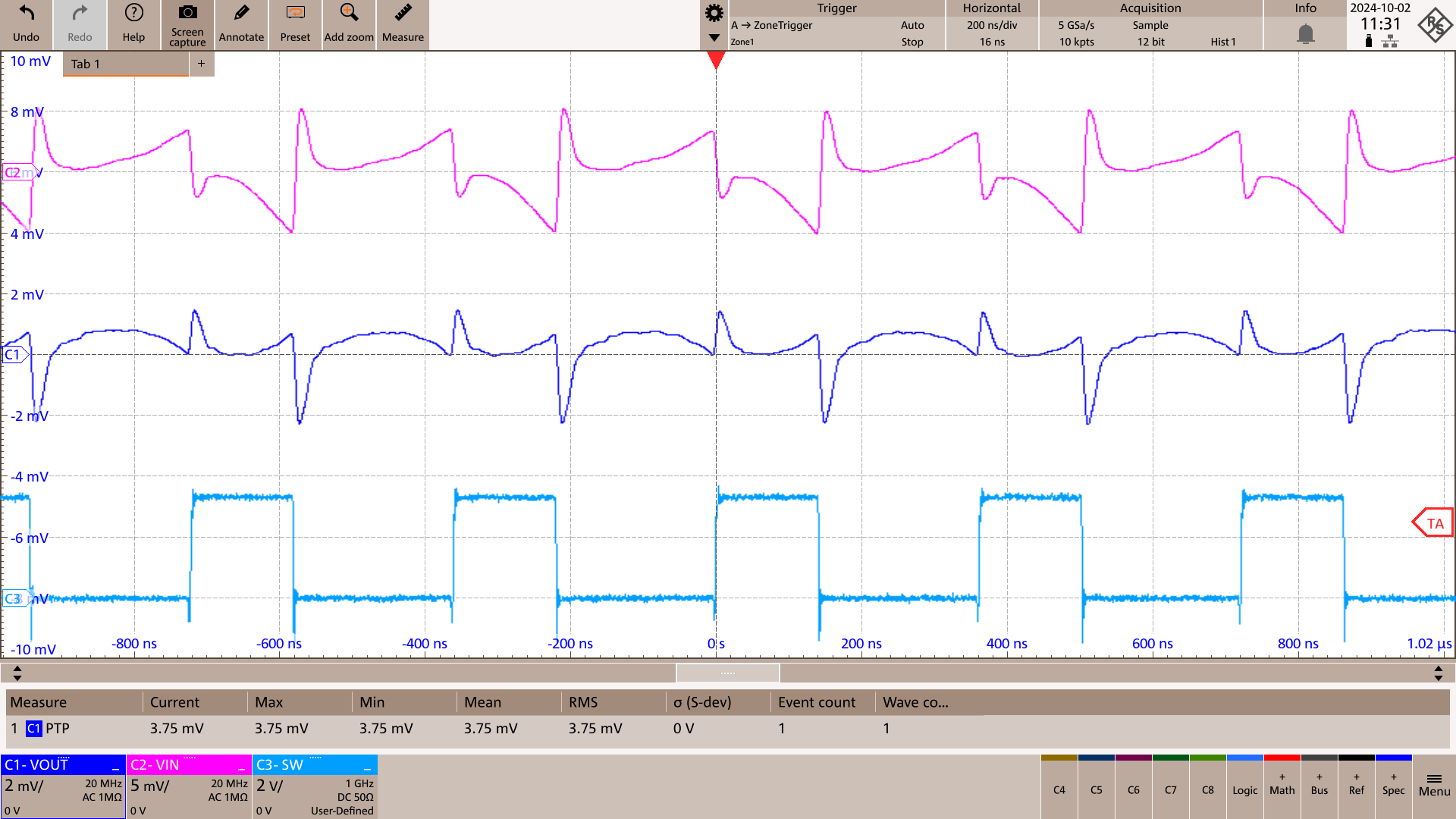
| VIN = 3.3V | VOUT = 1.2V | COUT = 3 × 22uF |
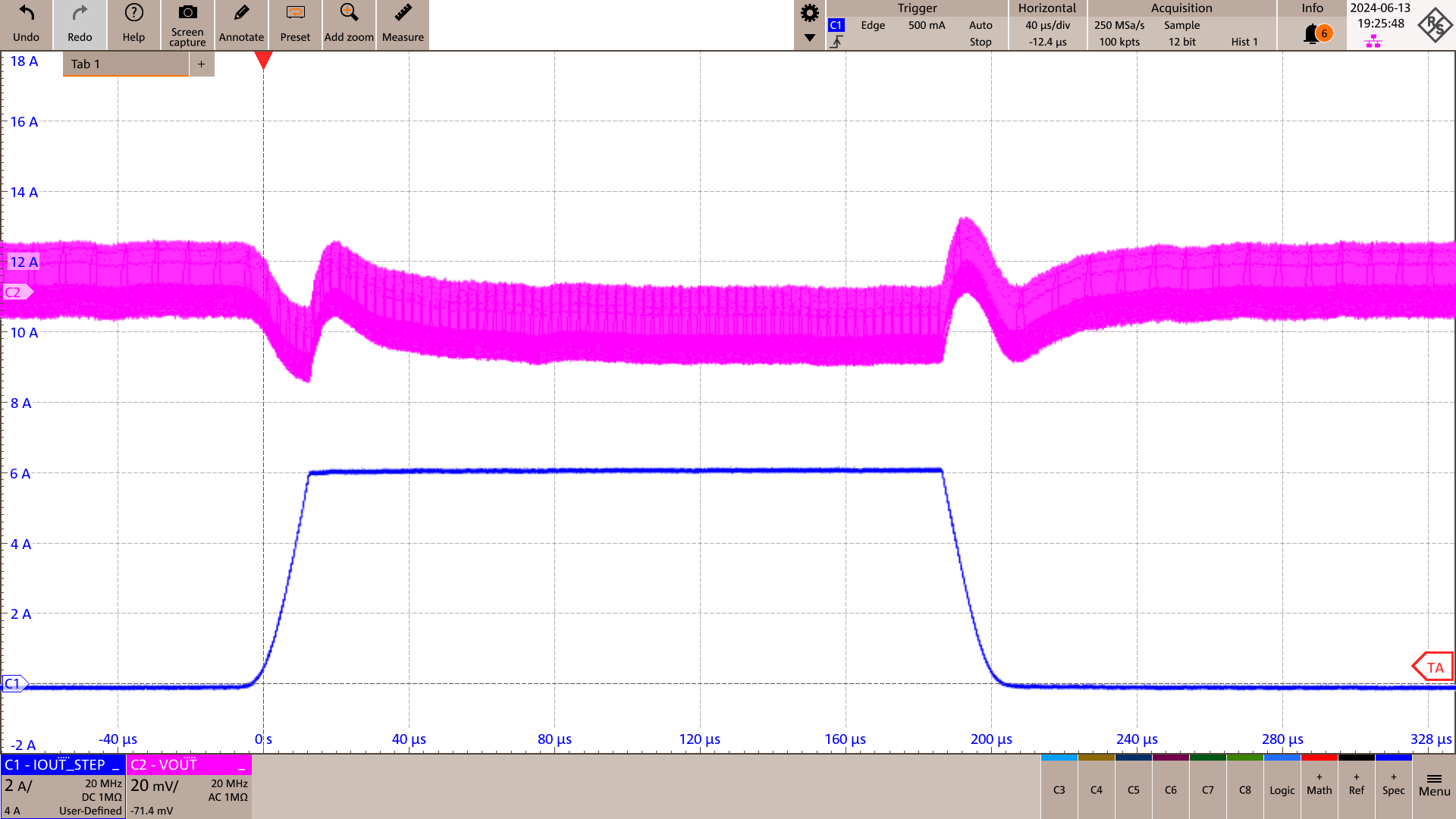
| VIN = 5.0V | VOUT = 1.2V | COUT = 2 × 22uF |
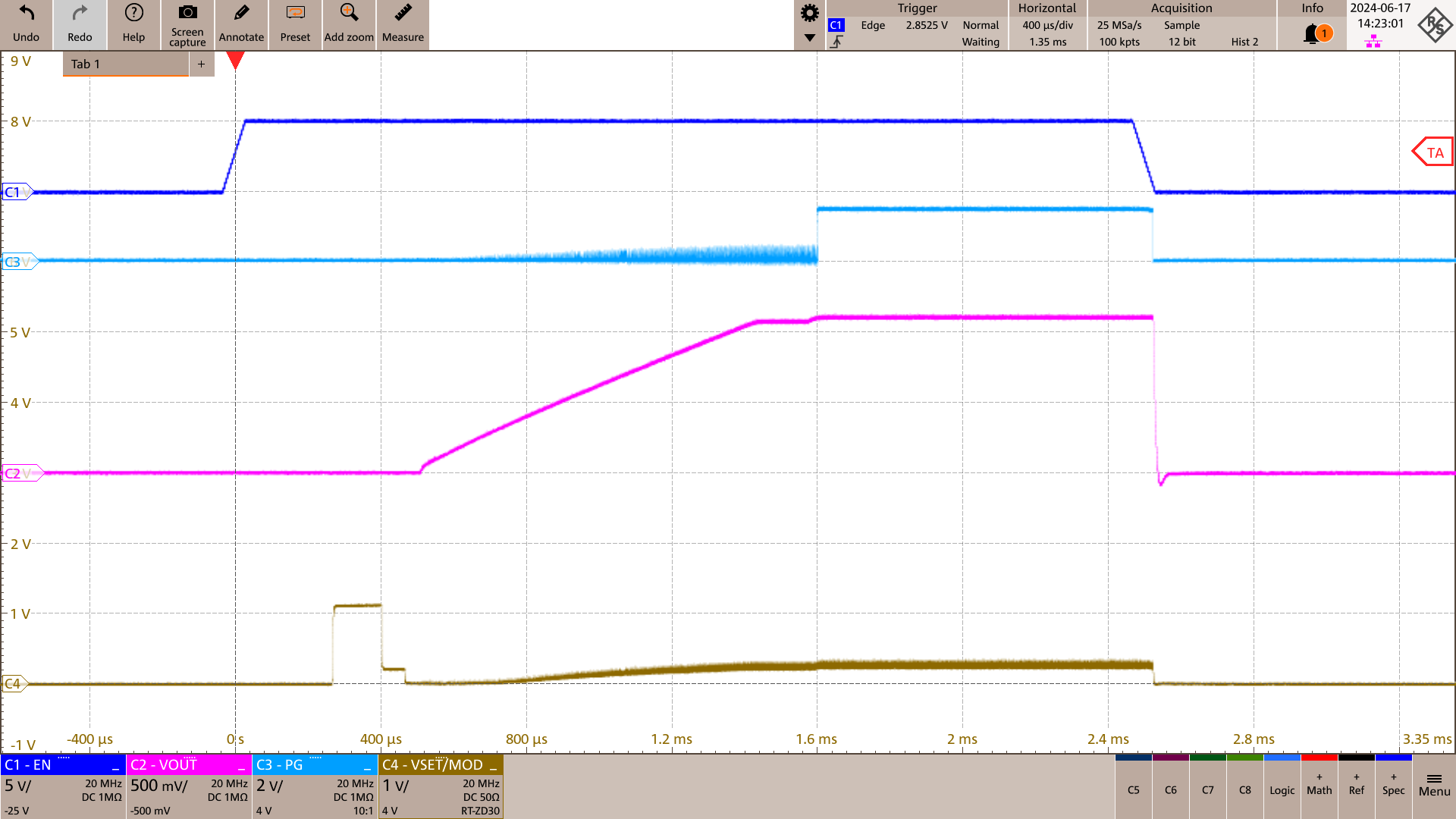
| RVSET = 56.2kΩ | IOUT = 6.0A |
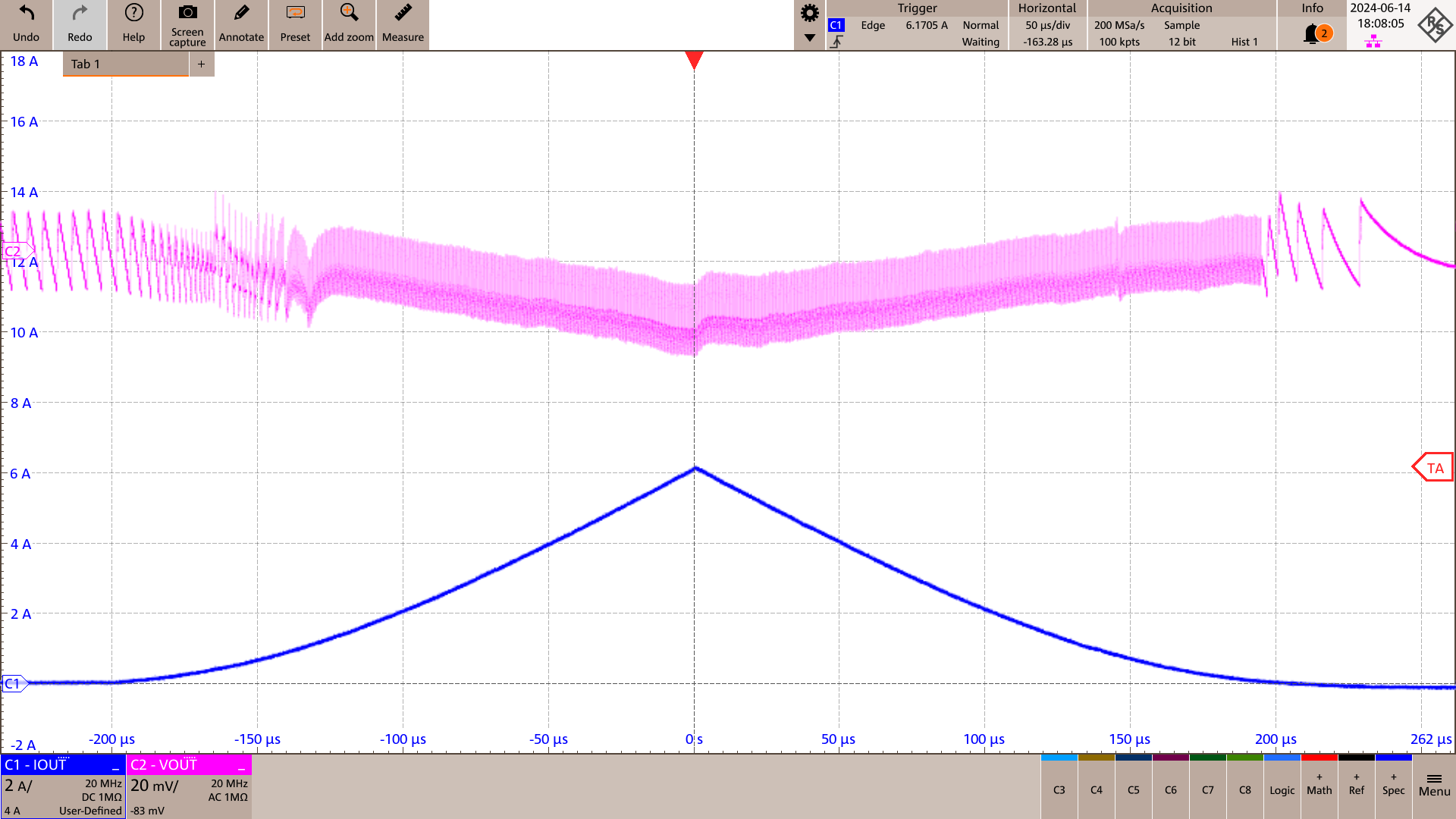
| VIN = 5.0V | VOUT = 1.2V | COUT = 2 × 22uF |

| RθJA = 29.9°C/W | TJmax = 125°C |

| TPSM82866CAx | PSM and FPWM |

| TPSM82866CAx | PSM and FPWM |

| TPSM82866CAx | PSM and FPWM |

| TA = 25°C |

| TA = 25°C |

| TA = 25°C |

| FPWM | TA = 25°C |
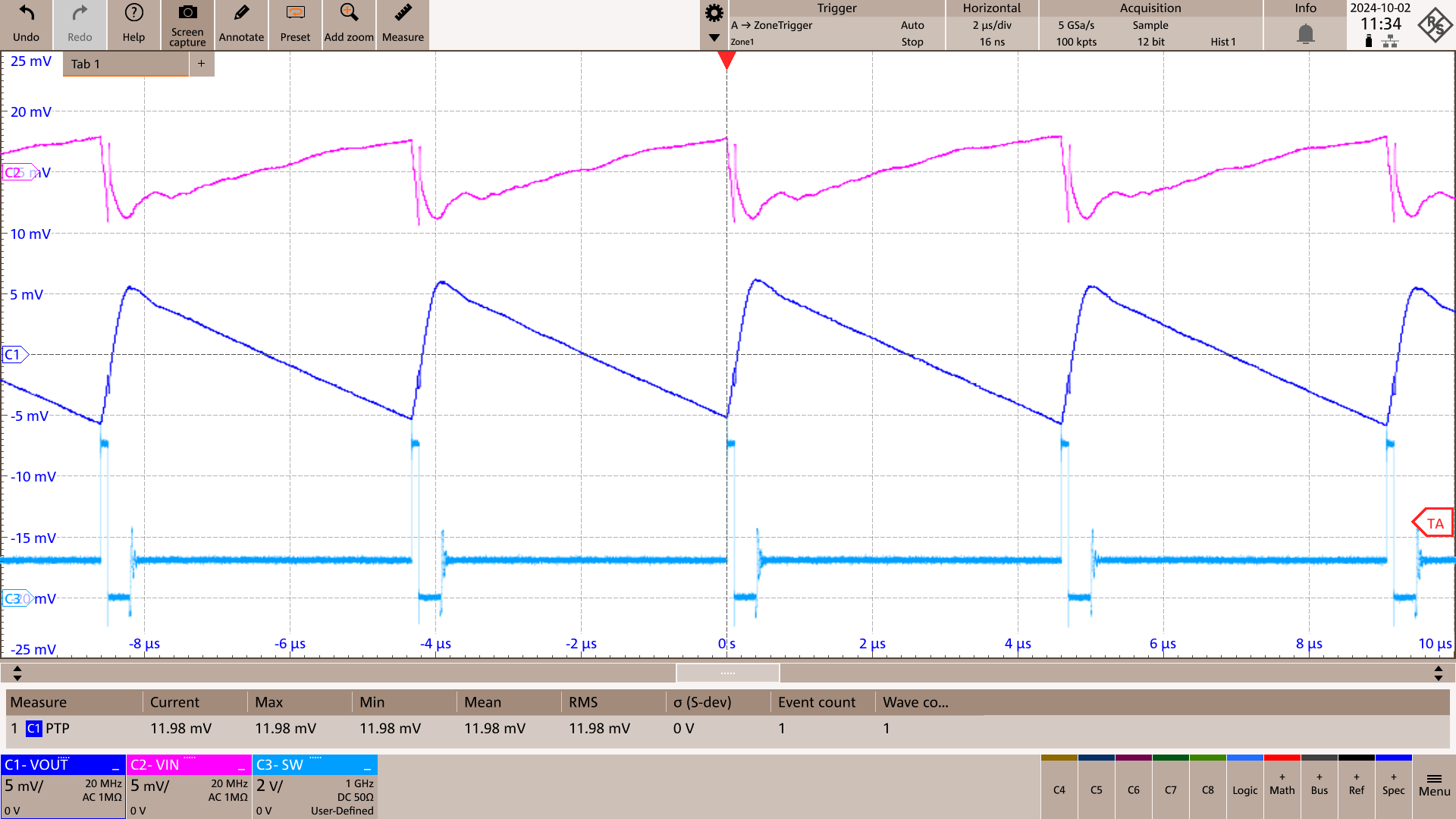
| VIN = 5.0V | VOUT = 1.2V | COUT = 3 × 22uF |

| VIN = 3.3V | VOUT = 1.2V | COUT = 3 × 22uF |
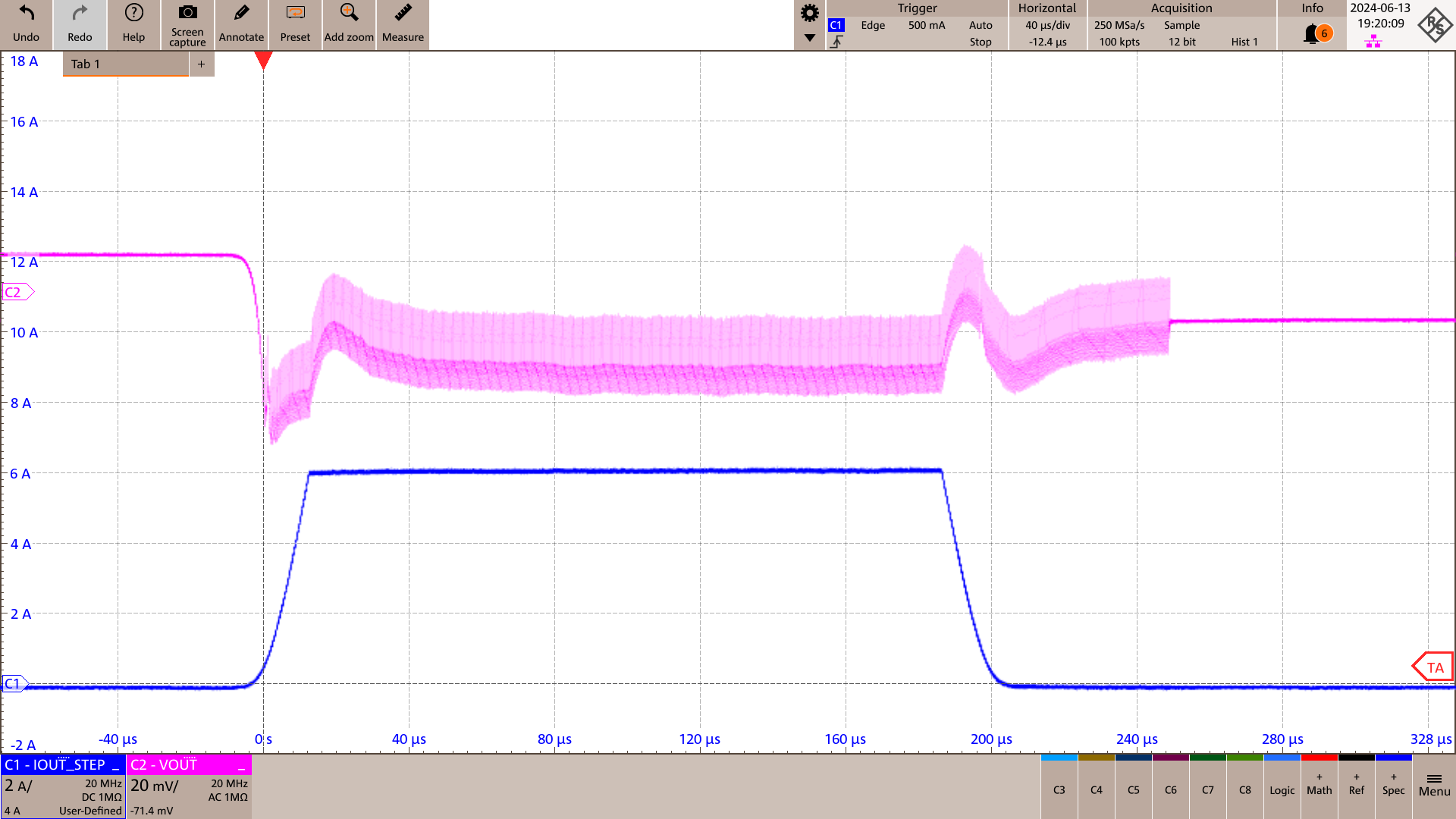
| VIN = 5.0V | VOUT = 1.2V | COUT = 2 × 22uF |
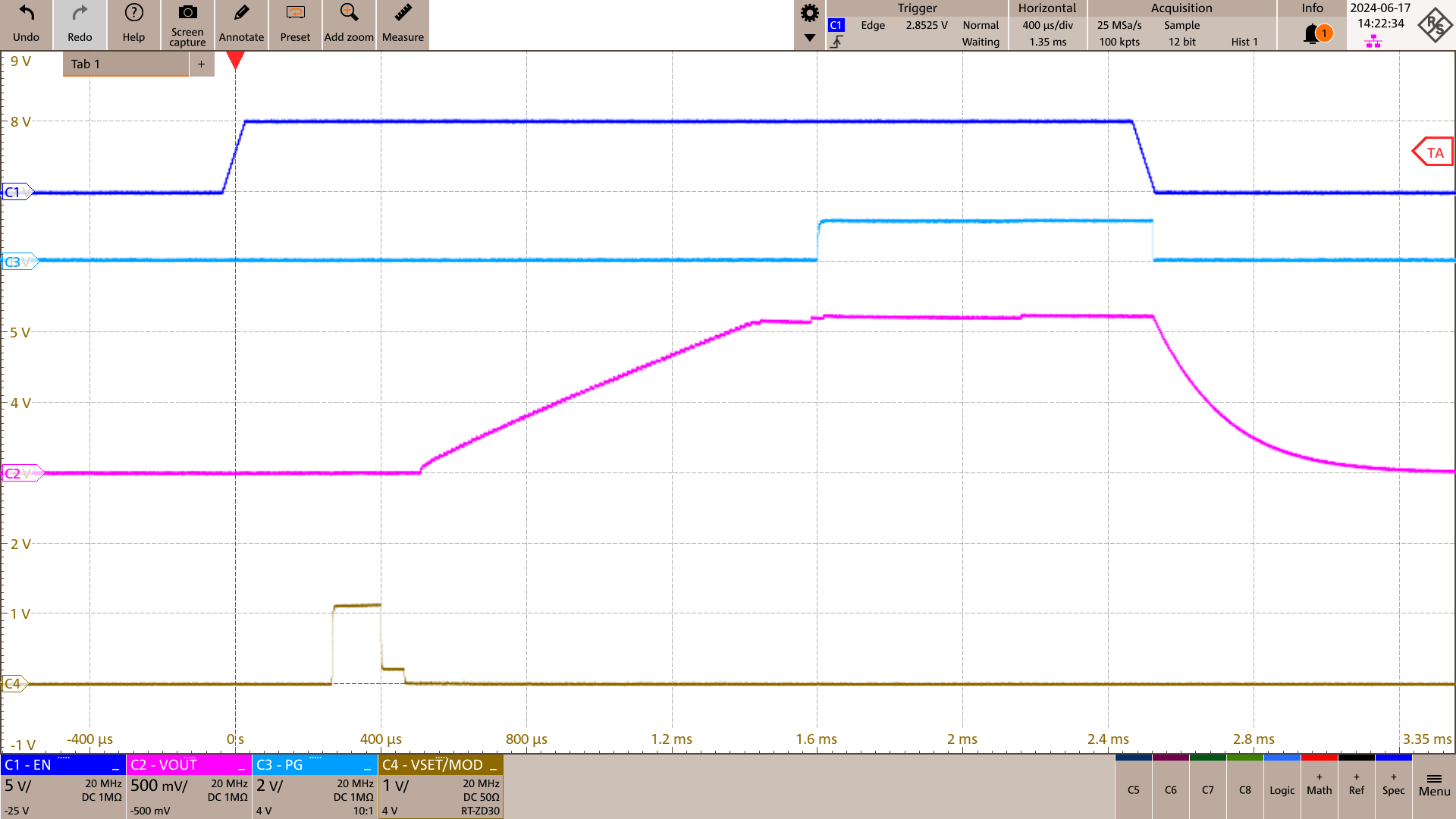
| RVSET = 56.2kΩ | IOUT = 0A |
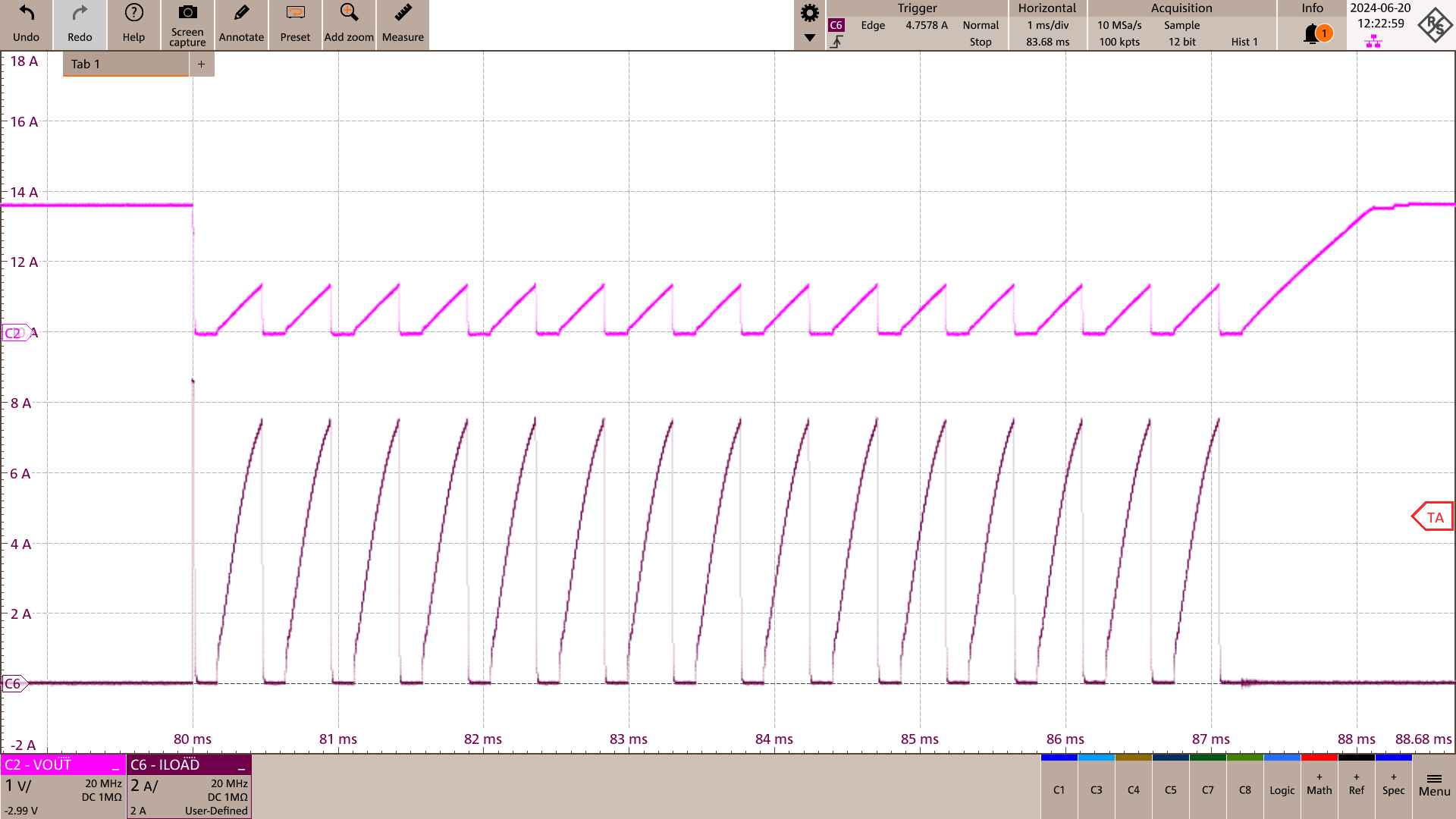
| RLOAD = 100mΩ (during overload) |

| RθJA = 29.9°C/W | TJmax = 125°C |